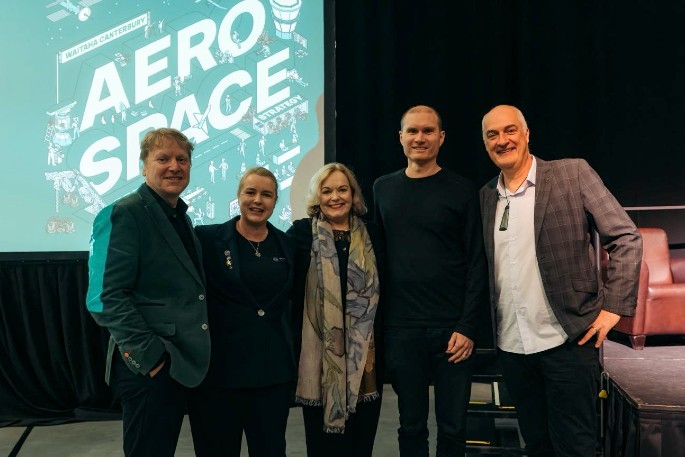This Content Is Only For Subscribers
The Canterbury region of New Zealand’s South Island is cementing its position as a globally recognised centre of aerospace innovation, with the launch of the Waitaha Canterbury Aerospace Strategy.
Developed by the Canterbury Aerospace Leadership Group – a coalition of leaders from the aerospace industry, tertiary institutions, and public agencies – the Strategy outlines a bold vision for Christchurch and Canterbury to become a global aerospace leader by 2035.
With a focus on innovation, sustainability, workforce development, and collaboration, it sets a clear path to transform the sector into a $1 billion contributor to the regional economy, positioning Canterbury as a hub for world-leading R&D and global investment.
“This Strategy is a uniting document that reflects the extraordinary potential of our region,” says ChristchurchNZ CEO and Canterbury Aerospace Leadership Group chair Ali Adams.
“It showcases how Canterbury can lead the way in solving global challenges through aerospace – from climate monitoring to sustainable propulsion – while creating high-value jobs and driving innovation that benefits our people and our planet.”
The Strategy builds on Canterbury’s unique geographical advantages, established infrastructure, and active ecosystem of aerospace firms – from satellite technology and advanced aviation to autonomous systems and green fuels.
Christchurch is one of four members of the global Space Cities Network, established in late 2024 when ChristchurchNZ Business Events joined with Lausanne, Houston and Seoul convention bureaux to foster collaboration and attract conference bids to the respective regions.
ChristchurchNZ general manager of destination and attraction Loren Aberhart says as part of the Strategy, the region aims to attract new conference bid opportunities and bring major international space conferences and scientific events to Christchurch.
“Hosting international business events in Christchurch brings wide-ranging benefits to the city. As well as the obvious economic benefits, hosting global experts in domains of space means our sector is not only learning and sharing knowledge with other experts from around the world, but building valuable relationships,” Loren says.
Kea Aerospace CEO Mark Rocket and a member of the Leadership Group, is also a champion for the city through the Tūwhana business events advocate programme. He says the sector has huge momentum.
“We’re standing on the launchpad of something extraordinary. With this Strategy, we are saying to the world: Canterbury is open for aerospace innovation. This is a region where bold ideas take flight – supported by a community that’s collaborative, future-focused, and committed to making a global impact.”
The Strategy sets out ambitious targets for the next decade, including growing the sector to more than $1 billion in economic impact regionally, supporting more than 1500 FTE jobs in aerospace across Canterbury and achieving net-zero emissions for 50 per cent of aerospace.
“By 2035, aerospace will be a cornerstone of Canterbury’s prosperity. But this isn’t just about growth – it’s about building a future that’s inclusive, sustainable, and driven by innovation,” Ali says.



